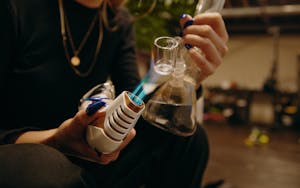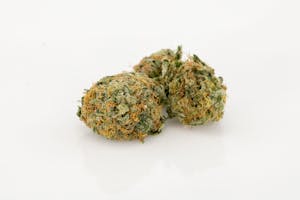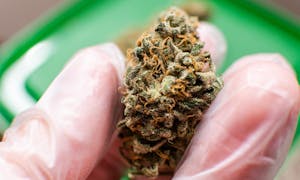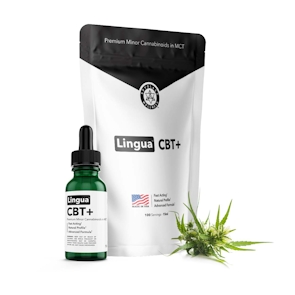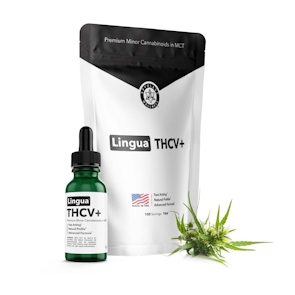
Photo by davide ragusa on Unsplash
What Is A Cannabinoid?
Ever wonder why cannabis makes you feel high? Read up! Organic molecules called "cannabinoids" cause intoxication, euphoria, and more. Created with Spyglass Wellness.
Unless you work in the cannabis industry, “cannabinoid” probably isn’t a word that you hear every day. Well, maybe by now you do, as cannabinoids start to become more and more mainstream.
Even though there are still dozens of ‘exotic’ cannabinoids like the ones that Spyglass Wellness carries.
Spyglass Wellness is a company that exists only to find alternatives to failed pharmaceuticals. And that ultimately means innovating in the cannabis space. Because, why wouldn’t it?
From seeking aid with addiction to using plant-based alternatives to help cope with chronic pain from a long-lasting injury. Spyglass Wellness has a cannabinoid for all of it.
They go above & beyond legacy pharmaceuticals with mindful cannabis-derived products that offer a quick, discreet, and accurate dosing option that’s right specifically for you.
Delivering products designed by industry-leading professionals and inspired by the latest breakthroughs in science and medical research is what distinguishes Spyglass Wellness from the pack.
But, what is a cannabinoid, anyway?
Simply stated, a cannabinoid is a member of a special class of chemical compounds called cannabinoids. These compounds were named after the cannabis plant—they’re chemicals that have effects that are cannabis-like, and they have special physiological roles in the human body.
What Is A Cannabinoid?

Photo by contentdealer / Adobe Stock Photo
A cannabinoid is a chemical that belongs to a unique class of chemical compounds named after the cannabis plant.
The structure of the first cannabinoid was isolated in 1964, by Israeli chemists researching the cannabis plant. In the years since, over 113 similar structures were identified in Cannabis.
Cannabinoids interact with specialized cell receptors in the human body, called cannabinoid receptors. A cell receptor is a specialized landing site that sits on the surface of cells, awaiting activation from chemical messengers.
The discovery of cannabinoids and their respective cannabinoid receptors enabled scientists to understand why cannabis produces a psychoactive effect.
As it turns out, the cannabinoids found in the cannabis plant mimic molecules that are naturally produced by the human body.
These latter molecules are called endocannabinoids.
Types Of Cannabinoids

Photo by Lealnard / Adobe Stock Photo
Cannabinoids may be named after the cannabis plant, but the plant certainly isn’t the only source of these unique molecules. Three distinct types of cannabinoids exist: plant-based, animal-based, and man-made.
But the two that you’re probably looking for are plant-based (for sure) and man-made, which are actually making a strong appearance putting pressure on regulating agencies in the past few years.
Spyglass Wellness offers an incredible variety of cannabinoids. From the classic THC, the soon-to-be-classic CBD, to more complex and rare cannabinoids like CBG, CBC, and plenty more.
You can check out their product lineup advertised on Herb right here where you’ll find products like their Lingua CBT Tincture and many more to choose from.
That said:
Here’s a summary of the key differences between the three main types of cannabinoids:
What Are Phytocannabinoids?

Photo by Robert Nelson on Unsplash
Phytocannabinoids are cannabinoids found in plants. The prefix phyto- means “plant.”
Thus far, only the cannabis plant is thought to produce phytocannabinoids. And the plant produces a lot of them, too—over 100, in fact.
Many of these compounds engage either directly or indirectly with cannabinoid receptors, inspiring chemical reactions within cells. The overall effects of these chemical reactions vary–researchers are still exploring the effects of cannabinoids on the human body.
But, the most remarkable effect is intoxication. Marijuana produces its psychoactive effects via specialized cell receptors called cannabinoid receptors.
The infamous tetrahydrocannabinol (THC) causes a “high” because it binds with cannabinoid receptors in the brain (CB1 receptors). THC is the primary intoxicant in the cannabis plant. It is also a cannabinoid.
What Are Endocannabinoids?
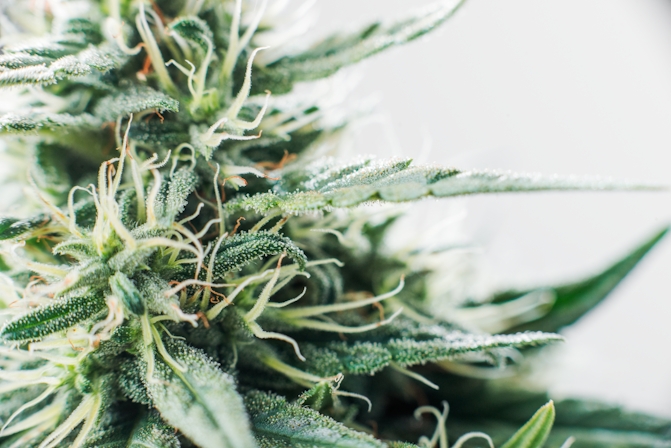
Photo by Iarygin Andrii / Adobe Stock Photo
Endocannabinoids are the cannabinoids that the body produces naturally. The prefix endo- refers to “endogenous”, meaning “from within.” The human body produces two primary endocannabinoids:
- Anandamide
- 2-arachidonoylglycerol (2-AG)
If cannabinoid receptors are like locks, endocannabinoids are like keys. Endocannabinoids, along with cannabinoid receptors and specific enzyme proteins, make up a larger endocannabinoid system.
The molecules engage with cannabinoid receptors to regulate a range of bodily activities. All vertebrates have an endocannabinoid system.
What Are Synthetic Cannabinoids?

Photo by tonefotografia / Adobe Stock Photo
Not all cannabinoids are natural. Synthetic cannabinoids are used to make pharmaceutical drugs and used in scientific research. The most well-known synthetic cannabinoid is dronabinol, which is sold under the brand name Marinol.
Marinol is sometimes prescribed to cancer patients to relieve nausea and vomiting associated with chemotherapy. It’s also sometimes prescribed to AIDS patients to increase appetite.
There are many other synthetic cannabinoids, although they’re often limited to laboratory research. Scientists use synthetic cannabinoids to study the endocannabinoid system.
What Cannabinoids Are In Cannabis?

Photo by roxxyphotos / Adobe Stock Photo
Have you ever read the label on a package of cannabis? When you purchase cannabis from a dispensary or medical retailer, there are two initialisms that are important to understand: THC and CBD.
THC and CBD are the two most common cannabinoids in the cannabis plant.
Most marijuana products available on the commercial market are either dominant in THC, CBD, or contain a mixture of both. Here’s the difference:
THC
THC is the abbreviation for Delta(9)-tetrahydrocannabinol. As most cannabis lovers probably know, THC is the primary psychoactive compound in marijuana. It’s what creates the “high” feeling after you smoke or ingest activated cannabis.
But, this chemical compound does a lot more than simply cause intoxication. THC is currently being explored for its potential in:
- Cancer
- Inflammation
- Nausea and vomiting
- Neuroprotection
- Pain
- Sleep
- Spasticity
Although, it is important to note that THC has not been medically approved for the treatment of any specific medical conditions.
CBD
CBD, short for cannabidiol, is the second most abundant cannabinoid. Like THC, the list of medical benefits of this cannabinoid just keeps getting longer. Unlike THC, CBD is non-intoxicating.
CBD is currently being explored for its potential in:
- Anxiety
- Graft versus Host Disease
- Inflammation
- Neuroprotection
- Pain
- Psychosis
- Seizure Disorders
It’s also now legal in more states than its more controversial counterpart.
But that isn’t all that the cannabis plant can offer. In fact, there are more than a 100 more cannabinoids where CBD and THC come from.
Only, we’re just starting to hear about them on the mainstream market. That’s where brands like Spyglass Wellness come in.
Offering products that hit all the checkboxes, and others that are aimed at very specific needs. But most importantly, products you’ll have a tough time finding anywhere else. Like their P-30 THCP+ Tincture, for instance.
Secondary Cannabinoids In Cannabis

Photo by Jhon David on Unsplash
The secondary cannabinoids in cannabis are called secondary for a reason—they are only present in the cannabis plant in very small concentrations.
While these minor cannabinoids may contribute to a synergistic effect with primary cannabinoids, their individual benefits may be too small to rely upon.
Plus, there’s another problem with research on secondary cannabinoids—there’s very little of it.
Most studies in minor cannabinoids are still in the preclinical phase, which means that their effects haven’t been tested on humans.
Instead, scientists use cell cultures and animal models in order to test the health effects of cannabinoids. Testing cannabis medicines on rodents or a few cells is a far cry from quality research with human patients.
Nonetheless, secondary cannabinoids boast some unique and interesting properties. If you’re hoping to learn more about what chemicals are in your cannabis, here’s the scoop on the most common secondary cannabinoids:
CBC
Also known as Cannabichromene, CBC is the third most common cannabinoid in the marijuana plant overall. In some cultivars, CBC may even take dominance over CBD. Although, CBC is still considered a minor cannabinoid. Like CBD, cannabichromene is non-intoxicating.
CBC is currently being explored for its potential in:
Thus far, however, research on CBC is in its infancy. Most studies on the cannabinoid rely heavily on animal and laboratory models, not human patients. At this time, CBC has not been medically approved for the treatment of any specific medical conditions.
CBN
Cannabinol (CBN) is a breakdown product of THC. As your dried cannabis flower ages, more THC converts to CBN. Most aged cannabis flowers and products contain small amounts of CBN. The longer the product has been dried and cured, the more CBN it will produce.
CBN is currently being explored for its potential in:
It’s often misreported that CBN has potent sedative effects. While there is some minor evidence that suggests that CBN may enhance drowsiness when combined with THC, the overall findings are relatively weak.
CBG
CBG is short for cannabigerol. This cannabinoid is found early in the growth cycle of the cannabis plant, which makes it somewhat difficult to find in large quantities. CBG, however, is non-intoxicating, meaning that it won’t cause a notable “high.”
CBG is currently being explored for its potential in:
CBG also boasts antioxidant potential, perhaps making it useful for combating stress-related damage.
THCv
Short for tetrahydrocannabivarin, THCv is another cannabinoid that works in tandem with THC. Some studies cite that THCv has about 20 percent the psychoactive capacity as THC, but recent research has shown that THCV actually mitigates some of the negative psychoactive impacts of THC.
THCv is currently being explored for its therapeutic potential in:
CBDv
CBDv is short for cannabidivarin. So far, not a whole lot of research has been done on CBDV. CBDv is an analog of CBD, meaning that it is similar to CBD but features a slightly different structure.
CBDv is currently being explored for its potential in:
Of course, research on CBDv is still in its early stages.
Delta 8 THC
The THC that many of us have come to know and love is known as Delta 9 THC. Delta 8 THC is slightly different. In adults, the molecule is less psychoactive than “regular” THC.
It’s also far less common—on the cannabis plant, Delta 8 THC is only found in small concentrations.
Delta 8 THC is currently being explored for its potential in:
Raw Cannabinoids: THCa and CBDa

THC acid (THCa) and CBD acid (CBDa) are the compounds found it marijuana before it is decarboxylated, or “decarbed”. These cannabinoids are found in raw cannabis, and can be eaten as a nutritional supplement or applied topically.
Decarboxylation happens when these delicate acids are exposed to heat. Once heated, the structure of the acids change and the molecules transform into different active compounds.
Therefore, you cannot smoke or inhale THCa or CBDa.
Once you take heat to these two acids, you convert them into their activated form. Heat breaks down THCa into psychoactive THC. THCa on is not psychoactive until you apply heat. CBDa degrades into CBD.
THC-acid (THCa)
THCa is a non-intoxicating raw cannabinoid. The molecule is the precursor to THC, and is found only on raw and unheated cannabis plants.
THCa is currently being explored for its potential in:
- Cancer
- Inflammation
- Nausea
- Neuroprotection
- Seizure
CBD-acid (CBDa)
CBDa is a non-intoxicating raw cannabinoid. The molecule is the precursor to CBD, and is found only on raw or unheated cannabis plants.
CBDa is currently being explored for its potential in:
- Cancer
- Nausea
Cannabinoid acids like THCa and CBDa are most often consumed as dietary cannabinoids. Many cannabis consumers make juices, smoothies, and raw cannabis tinctures in order to enjoy raw cannabinoids.
Herb Recommended Products:
READ MORE
